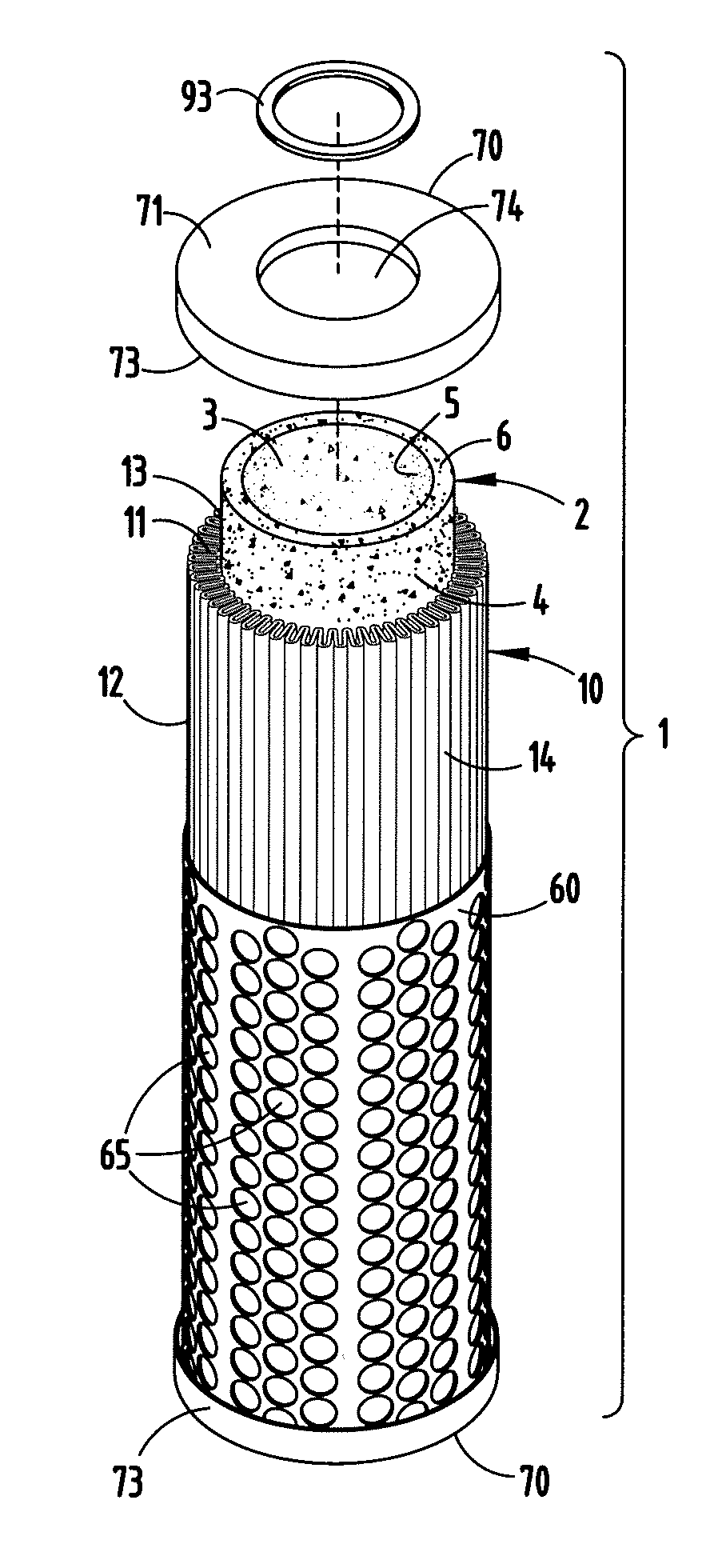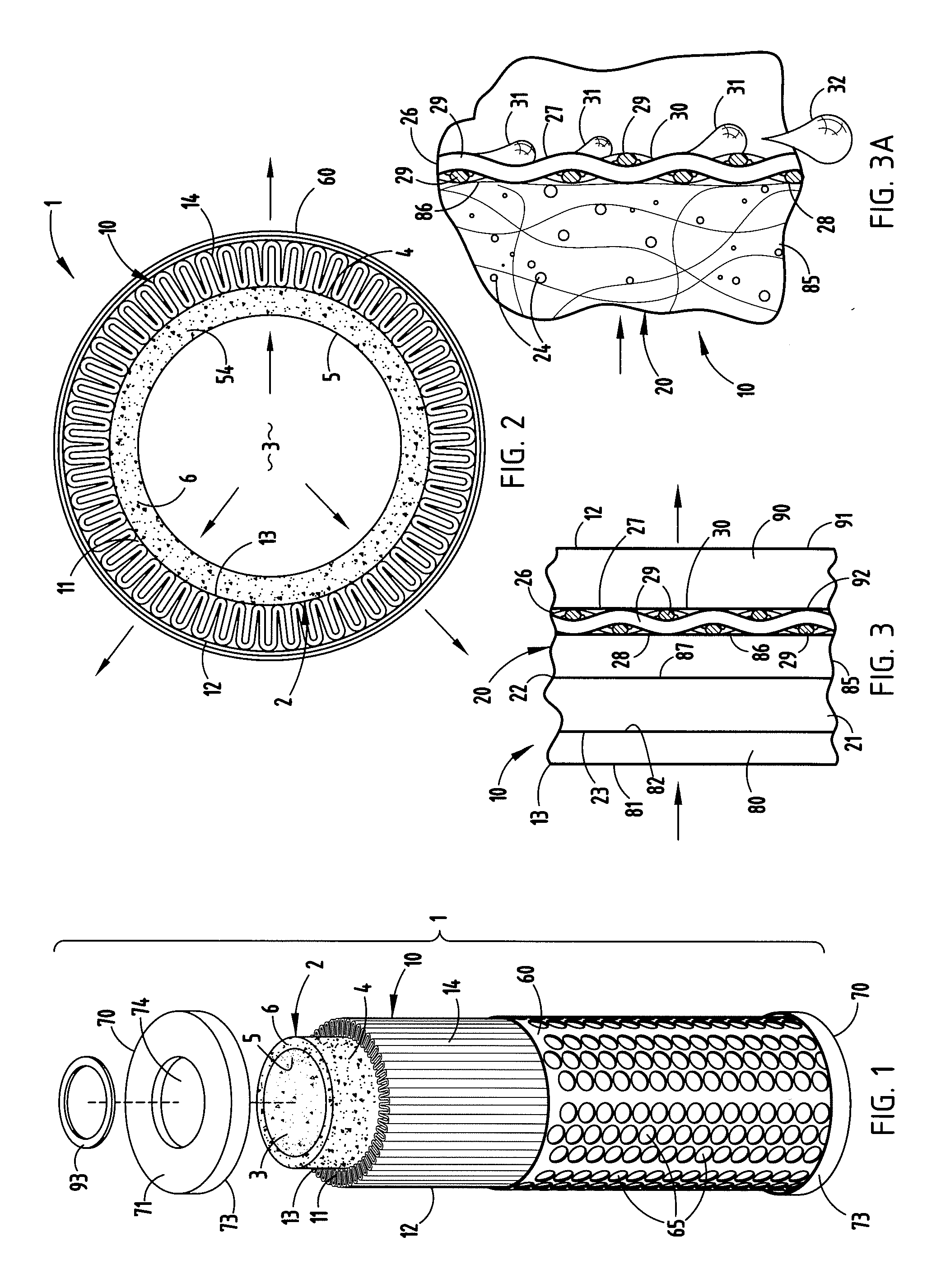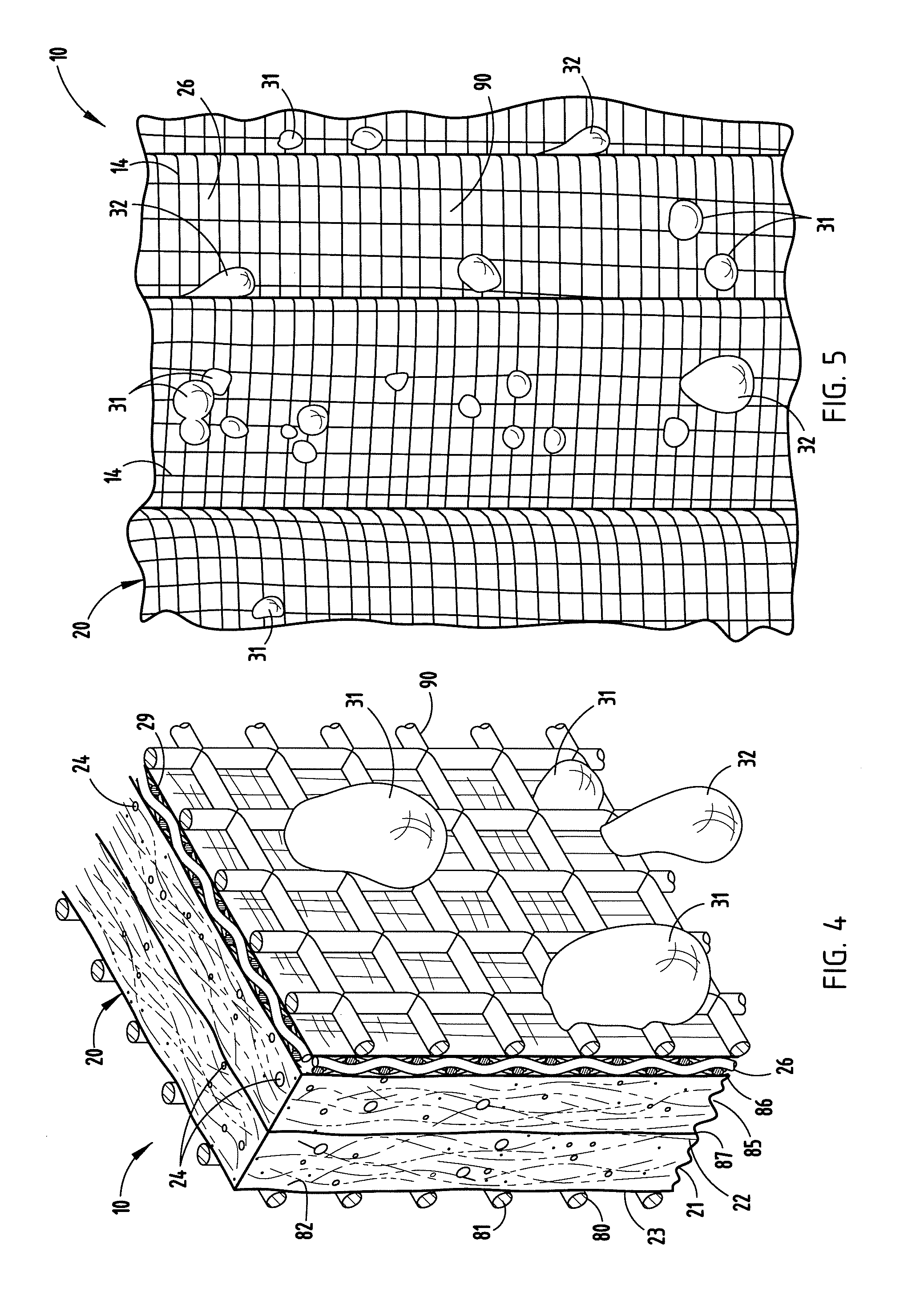Apparatus and method for removing contaminants from industrial fluids
a technology of industrial fluids and apparatuses, applied in the field of filtration systems, can solve the problems of difficult to separate water from fuel, alter the ability of fuel to be effectively filtered, and corrosion of engine components, and achieve the effects of efficient and effective removal of the same from fuel, efficient use, and economical manufactur
- Summary
- Abstract
- Description
- Claims
- Application Information
AI Technical Summary
Benefits of technology
Problems solved by technology
Method used
Image
Examples
example 1
Additional Example 1
[0099]Additional example one of new pleated coalescence media 20 is made up of two types of fibrous filter media tightly stacked together. One type, at the flow upstream side, is a stack of four layers of non-woven micro fiberglass filter media with two different media structures. More specifically, the first two non-woven media layers are made of media 21, which is non-woven micro fiberglass filter media with a mean flow pore size of 6.5 microns and a water repellency of 5.0 inches of Water Gauge, and the following two non-woven media layers are made of media 85, which is non-woven micro fiberglass filter media with a mean flow pore size of 6.4 microns and a water repellency of 20.0 inches of Water Gauge. The other type, at the flow downstream side, is a pile of two layers of media 26, which is precisely woven hydrophilic monofilament mesh with an opening of 18.0 microns and a thread diameter of 31.0 microns. Furthermore, the above six layers of fibrous filter m...
example 2
Additional Example 2
[0100]Additional example two of new pleated coalescence media 20 is made up of two types of fibrous filter media tightly stacked together. One type, at the flow upstream side, is a stack of four layers of media 21, which is non-woven micro fiberglass filter media with a mean flow pore size of 6.5 microns and a water repellency of 5.0 inches of Water Gauge. The other type, at the flow downstream side, is a pile of two layers of media 26, which is precisely woven hydrophilic monofilament mesh with an opening of 18.0 microns and a thread diameter of 31.0 microns. Furthermore, the above six layers of fibrous filter media are retained between two layers of steel mesh screen 90 with a wire diameter of 0.10 inches and a mesh size of 10.0×12.0 per square inch to remain their contact between any two neighboring filter media layers even under hydrodynamic interactions due to through fuel-water blend flow. Finally, all eight layers of both fibrous filter media and steel mes...
example 3
Additional Example 3
[0101]Additional example three of new pleated coalescer media 20 is made up of two types of fibrous filter media tightly stacked together. One type, at the flow upstream side, is a stack of three layers of non-woven fibrous filter media with two different media structures. More specifically, the first non-woven media layer is made of media 107, which is a laminated synthetic filter paper with Frazier air flow of 11.0 CFM / SF @ΔP ½″ H2O and DOP smoke penetration of 6.0% @32 liters / min., and the following two non-woven media layers are made up of media 108, which is non-woven micro fiberglass filter media with an air permeability of 0.26 inches of water gauge and an ASHRAE efficiency (52.1) of 80.0-85.0%. The other type, at the flow downstream side, is one layer of media 26, which is precisely woven hydrophilic monofilament mesh with an opening of 18.0 microns and a thread diameter of 31.0 microns. Furthermore, to remain their contact between any two neighboring fil...
PUM
| Property | Measurement | Unit |
|---|---|---|
| Length | aaaaa | aaaaa |
| Pore size | aaaaa | aaaaa |
| Pore size | aaaaa | aaaaa |
Abstract
Description
Claims
Application Information
 Login to View More
Login to View More - R&D
- Intellectual Property
- Life Sciences
- Materials
- Tech Scout
- Unparalleled Data Quality
- Higher Quality Content
- 60% Fewer Hallucinations
Browse by: Latest US Patents, China's latest patents, Technical Efficacy Thesaurus, Application Domain, Technology Topic, Popular Technical Reports.
© 2025 PatSnap. All rights reserved.Legal|Privacy policy|Modern Slavery Act Transparency Statement|Sitemap|About US| Contact US: help@patsnap.com



